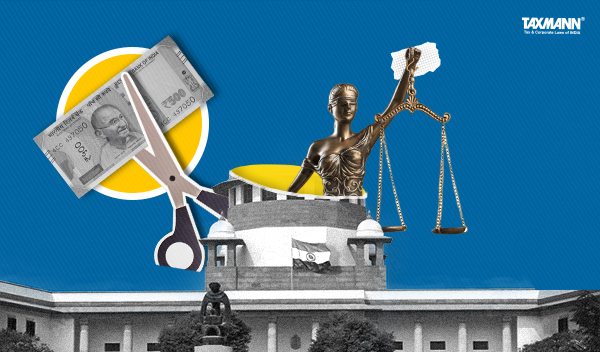No Deduction of Compensation Paid for Breach of Contract if Firm Had No Right or Title in Properties | HC
- Blog|News|Income Tax|
- 2 Min Read
- By Taxmann
- |
- Last Updated on 7 October, 2024
Case Details: PCIT vs. Canara Housing Development Company - [2024] 167 taxmann.com 77 (Karnataka)
Judiciary and Counsel Details
- S.G. Pandit & C.M. Poonacha, JJ
-
Sanmathi E.I., Adv. for the Appellant.
-
M.V. Seshachala, Sr. Adv. & G.S. Nagharish, Adv. for the Respondent.
Facts of the Case
The assessee firm was engaged in the real estate and land development business. One of its partners agreed with a third party to sell its rights in respect of its four properties. However, the assessee did not hand over the properties as per the agreement within the stipulated time, and the purchaser claimed compensation.
Consequently, the assessee paid the compensation pursuant to the arbitrator’s award. The assessee claimed said compensation as a deduction in its return. The Assessing Officer (AO) disallowed the assessee’s claim that the assessee was not the owner of the properties. The expenditure on account of the compensation paid was not an expenditure for the purpose of the assessee’s business.
On appeal, the CIT(A) affirmed the order of AO, which the Tribunal reverses. The matter then reached before the Karnataka High Court.
High Court Held
The High Court held that the assessee was not the owner nor had any right of ownership over the properties, which were the subject matter of the agreements. It was further undisputed that the said agreements were entered into by one of the partners in his individual capacity. It was held that the expenditure on the compensation can be claimed only by the entity that owns the property and not somebody else and, hence, disallowed the expenditure.
The agreements did not mention that the said partner was acting as a partner of the firm or that the properties that were the subject matter of the agreements were the firm’s properties. Admittedly, the assessee was not the owner of the properties that were offered to be conveyed to the third party, nor was it entitled to any area in the four properties mentioned in the agreement that the respective builders were developing.
Thus, the question of permitting the assessee to claim a deduction under section 37(1) would not arise.
List of Cases Reviewed
- Order of ITAT, Bengaluru in ITA No.193/Bang/2014, dated 12-5-2017 [para 31] reversed.
Disclaimer: The content/information published on the website is only for general information of the user and shall not be construed as legal advice. While the Taxmann has exercised reasonable efforts to ensure the veracity of information/content published, Taxmann shall be under no liability in any manner whatsoever for incorrect information, if any.

Taxmann Publications has a dedicated in-house Research & Editorial Team. This team consists of a team of Chartered Accountants, Company Secretaries, and Lawyers. This team works under the guidance and supervision of editor-in-chief Mr Rakesh Bhargava.
The Research and Editorial Team is responsible for developing reliable and accurate content for the readers. The team follows the six-sigma approach to achieve the benchmark of zero error in its publications and research platforms. The team ensures that the following publication guidelines are thoroughly followed while developing the content:
- The statutory material is obtained only from the authorized and reliable sources
- All the latest developments in the judicial and legislative fields are covered
- Prepare the analytical write-ups on current, controversial, and important issues to help the readers to understand the concept and its implications
- Every content published by Taxmann is complete, accurate and lucid
- All evidence-based statements are supported with proper reference to Section, Circular No., Notification No. or citations
- The golden rules of grammar, style and consistency are thoroughly followed
- Font and size that’s easy to read and remain consistent across all imprint and digital publications are applied








 CA | CS | CMA
CA | CS | CMA


